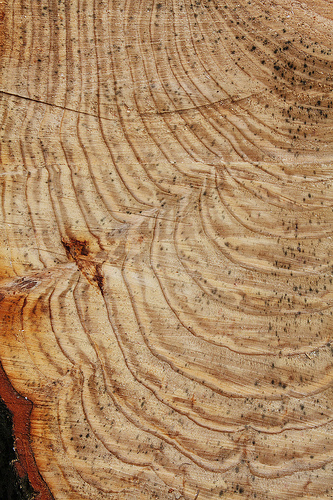Do you remember your woodwork lessons at school? How the teacher told you that you that it was possible to tell the age of a tree by counting the rings that radiated out from the centre of a cross section of the trunk? Little did you know it then, but the facts you learned about counting tree rings were the basis of an entire branch of science known as dendrochronology. In fact, the study of tree rings can tell us a whole lot more than simply the age of a tree: it can provide information on significant natural events and climate changes that happened long ago, help us to date historic wooden structures and has practical uses in the fields of archaeology and even art history. It is also believed that dendrochronology can help with the prediction of future climactic conditions including droughts and floods.

Whose Idea Was Dendrochronology?
Curiously, the idea of studying tree rings began with an astronomer. In the course of his studies into the effects of sunspots and solar variations, the American astronomer Andrew Douglass noted that in years of lower rainfall, tree rings were thinner. Douglass correlated these dryer years with the known eleven-year solar cycle, which suggested a link between sunspot activity and corresponding climate change. Whilst Douglass’ studies were initially dismissed, he was subsequently able to prove the value of dendrochronology in 1929 by conclusively dating the age of ancient Native American buildings constructed from yellow pine trees.
How Does Dendrochronology Work?
For every year that a tree grows, it produces a new layer of wood just beneath the outer bark. The width of these annually produced layers – or tree rings – will vary in accordance with external weather conditions. Therefore, tree rings produced in a normal, temperate years will be wider than those produced in drought years for example. The older the tree, the more tree rings there are to count and the more the tree can tell us about historical external conditions that have affected the growth of the tree in particular years. This historical information can then be expanded upon by comparing the tree rings of trees of the same age and species that have grown in different geographical areas, for example.
How Does Dendrochronology Help Us Today?
Before the discovery and adoption of dendrochronology, the most reliable scientific method of dating wood and wooden objects was to use carbon dating. Whilst this method was useful, the results obtained always contained a margin of error which meant that, at best, the age of a wooden artefact could only be placed within a forty-year period (i.e. plus or minus twenty years of its actual age). Dendrochronology allows the dating of wood with pinpoint accuracy if the bark is still present, but even if not the results of dendrochronology tend to be 95% accurate or better.
This accuracy means that dendrochronology is invaluable to architectural historians as it allows them to obtain the precise date of construction for ancient timber framed buildings such as churches. Dendrochronology can also tell us a great deal about the occurrence of forest fires, not only when they occurred, but also their frequency and severity; information which is vital for forest management. Similarly, dendrochronology can provide useful evidence of historic insect infestations. Of particular relevance in the twenty-first century, dendrochronology provides accurate data about natural events that affected the earth’s climate including glacial activity, volcanic eruptions, rainfall measurement and drought. Analysis of this data can help us to predict likely future climate conditions and respond to them appropriately.
Citations:
- Photograph by Shandchem (via Flickr) [CC BY-ND 2.0]
For an excellent selection of tree surgery equipment head over to Buxton’s wonderful online store, home to all of your arborist equipment and forestry kit.

